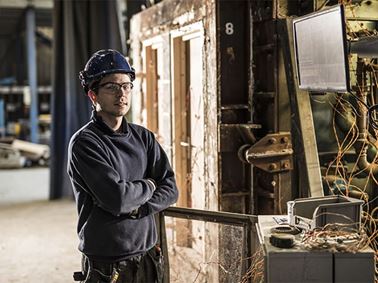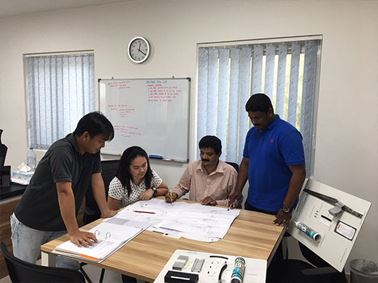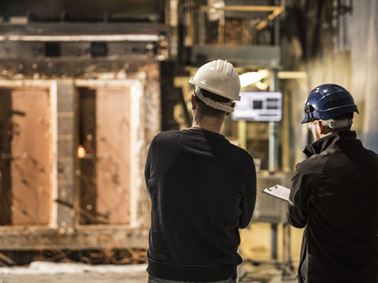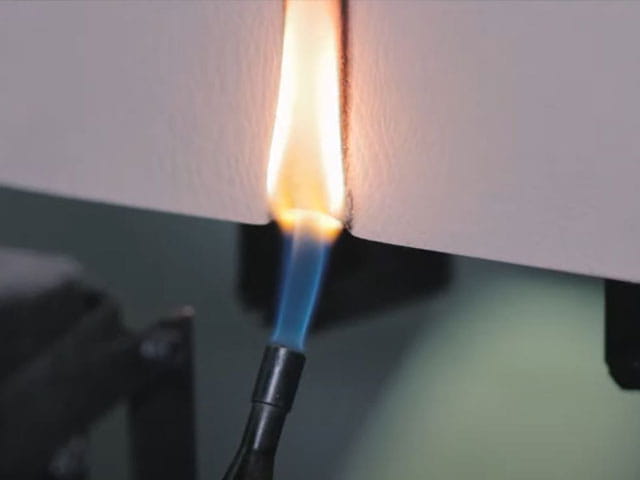Plastics and Surface Material testing
It is essential to test any plastics used in construction, as well as surface materials used in completed buildings. Different plastics and surface materials react differently under fire conditions. If not tested or installed correctly, they can change the fire-resistant properties of the materials they are installed onto; through burning droplets igniting sources unexpectedly, or heat transfer accelerating another product's reaction. Understanding the individual behaviours of plastics and surface materials is vital to the safe passage of people during a fire.
Warringtonfire’s plastics and surface material testing can help you establish how your product systems will react in a real-life fire situation, so they can be installed appropriately and be fit for their intended purpose.
Why plastic and surface material testing?
Most plastics and surface materials will burn quickly and emit toxic gases and smoke, leading to potentially dangerous conditions in the event of a fire. It is essential to know how each product will react in a real-life fire situation so that each product system can be installed with as much certainty as possible providing reassurance that they will perform as expected.
What testing do my plastics and surface materials have to undergo?
All the tests that plastics and surface materials undergo are classed as reaction to fire tests. The purpose of these tests is to confirm how the products will react in different scenarios and how their response affects the rest of the building.
Warringtonfire can perform all the testing needed under the Construction Products Regulation for system three testing and flooring covering to EN 14041:2004/AC:2006.
Additional reaction to fire tests Warringtonfire can perform include the following:
Oxygen index test to BS EN ISO 4589-2:2017 and BS EN ISO 4589-3:20
Oxygen index testing measures the amount of oxygen required to support sustained ignition, indicating the material's flammability.
This part of BS EN ISO 4589 specifies methods for determining the minimum concentration of oxygen in a mixture with nitrogen that will support small vertical test specimens' combustion under specified test conditions.
The minimum oxygen concentration that supports the sustained ignition is determined by testing a series of specimens in different oxygen concentrations. The results are defined as oxygen index values.
Surface spread of flame testing to BS 476: Part 7:1997
Plastics and surface materials are classified according to test performance during the surface spread of flame test. The spread of flame is measured without the flame necessarily involving the main body of the material, indicating the material's flammability and its ability to spread the fire. A standard method of test for determining the flammability of materials is BS 476: Part 7; this method indicates the flame spread across the material so that an assessment of its possible performance in a real fire situation can be made.
The material spread of flame along the surface of a product orientated in a vertical plane is determined by this test method. The test provides data suitable for comparing the performances of essentially flat materials, composites or assemblies. It is used primarily for the assessment of the performance of wall or ceiling linings.
Ignitability testing
Warringtonfire can also test plastics and surface materials for ignitability to BS 476 Part 5:1979, BS 476 Part 12:1991, BS EN ISO 11925-2:2020 and BS ISO 11925-3:1997.
These test methods determine the ignitability of a material, composite or assembly when subjected to direct impingement of flames. It is not designed to assess flame spread. The possibility of the material, composite or assembly causing secondary ignition of other materials is also considered by observing burning debris.
The plastic or surface material is mounted vertically into the test frame and the standard details seven different ignition sources which replicate various real-life fire sources.
During the test, observations of the number of flaming droplets or debris are made.
The standard does not provide classification criteria. The following test data is recorded:
- The flame source and application time(s)
- Whether the face and/or edge of the product was tested
- Whether sustained or transient ignition occurred
- Whether debris separates from the product and whether it is flaming or glowing
- Whether flaming (or glowing) reaches any edge during ignition source application
- The time for flaming (or glowing) to reach any edge of the specimen within the first 10s after the removal of the flame
Single Burning Item (SBI) Test to BS EN 13823:2020
The single burning item test provides data on a product heat release, surface spread of flame properties and smoke production when exposed to a thermal attack by a single burning item (SBI).
Heat release is a measure of the contribution that a burning material makes to a fire in progress; for example, a high heat release rate will produce a high rate of temperature increase in surrounding un-burnt material and accelerate fire spread.
Plastics and surface materials are common in all construction projects and so knowing how they react to fire is vital to keeping people and properties safe.
To find out more about how Warringtonfire can help you with your reaction to fire testing, please contact our laboratory below.
Our Services
SERVICES

Fire Resistance
Find out how we test our customers passive fire protection products, to meet British, European and International standards in support of both CE marking and other third-party certification programs.

Fire Engineering
Find out more about how we can offer a range of fire inspection and engineering to complement our other services.

Certification
Find out how about our a range of fire and non-fire third party certification to complement our other services.
